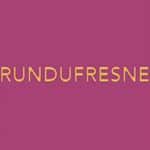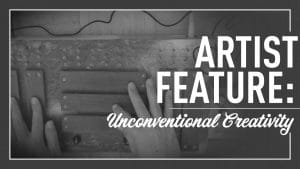
Artist Feature: Strymon Holiday Sounds – Jingle All the Way!
It’s the most wonderful time of the year…Why? Because it’s time for our annual Strymon Holiday Sounds Artist Feature. Happy Holidays everyone! We always look
Free US Shipping On Orders Over $49
Easy 30-Day Returns
Financing Available Through ![]()

 Run Dufresne is an artist we’ve enjoyed watching and listening to for quite some time now. Innovative and unique are just a few of the words we’d use to describe his work, both musically and visually. If the name Run Dufresne sounds familiar to you, it could be because we included his “Merry Christmas (Seasonal Depression),” in our Holiday Sounds blog this past December.
Run Dufresne is an artist we’ve enjoyed watching and listening to for quite some time now. Innovative and unique are just a few of the words we’d use to describe his work, both musically and visually. If the name Run Dufresne sounds familiar to you, it could be because we included his “Merry Christmas (Seasonal Depression),” in our Holiday Sounds blog this past December.
We recently gave DIG to Run Dufresne and asked him to go forth and work his creative mojo, using the pedal in whatever ways inspired him. What he gave us in return was right in line with what we’ve come to enjoy so much about his work and his process — an interesting alchemy of musical creativity and visual magic. We also had a chat with Dufresne about his process and the ways in which DIG inspired his work. Read on, and may you find yourself inspired!
Tell us a little bit about your experience with DIG.
The great thing about the DIG is that, in addition to being a go-to delay for ambient guitars or 80s throwback sounds, once you let the DIG take control and start letting the multitudes of functions inspire your creativity, you may find yourself with rhythms and patterns you wouldn’t have written otherwise.
Can you tell us about the inspiration for images and sounds of “They Said to Bury It”?
I wanted to give some sort of visual representation of what a delay felt like and [I] quickly realized that my favorite whiteboard for planning and organizing my projects would be perfect for trying to capture the aural sensation of delays in a stop-motion video.
I spent hours filling the whiteboard with a completed frame, taking a photo, erasing a portion, and repeating this process in a reductionist, sculpting fashion. It was long and hard work, and something I’d never tried before, but seemed to fit the spirit of what the DIG was doing for me in my studio and my music.
Yes, in this video I did the standard guitar-player-with-a-delay tricks, but for me,
the most exciting aspect of the DIG was using it on other instruments and in post-production. Within minutes, I was processing the opening and closing of a tape deck.
Run Dufresne’s “They Said To Bury It”:
A nice little trick is to set up a Send in your DAW with the DIG, and then just start mic’ing whatever you can find and perform with it. The quarter-note pattern I ‘played’ on the tape deck became an eighth-note paradiddle, and this process repeated itself on every element of the track.
Single taps of a closed hi-hat became rolling echoes. The hit of a wah-tube became an esoteric dive-bomb as I played with the delay time during the performance. The DIG even allowed me to make my male falsetto voice sound more like a female background vocal, by using the hi-pass filter and turning the Mix all the way up.
Tell us about your musical journey so far, how did Run Dufresne come about?
I have always been drawn to the strange and unusual. Early in life, I became
interested in aggressive music like Converge, Norma Jean, The Chariot, etc. I strongly identified with the sharp edges of their tone, the breadth of expression in their playing, and the way they shrugged off tension-and-release and opted simply for tension. I think that’s what led me to study jazz and classical music, and to my particular love for Thelonious Monk and Charles Ives, among others.
This all very directly led to the conception of my current project, Run Dufresne, which fits sonically somewhere between a thriller/horror film, an indie synth band, and an American hard rock band. I’ve put a lot of energy into creating a space for Run Dufresne on YouTube, which gives the listener a visual on what happens in my studio with new music posted there every week.
To hear more of Run Dufresne’s work check out his SoundCloud and bandcamp accounts.
How has DIG inspired you? Make sure to tag us in your DIG videos and posts!
Subscribe to our newsletter to be the first to hear about new Strymon products, artist features, and behind the scenes content!

It’s the most wonderful time of the year…Why? Because it’s time for our annual Strymon Holiday Sounds Artist Feature. Happy Holidays everyone! We always look

Today’s Artist Feature is all about the unconventional. What would a wire chair sound like if it were translated into music? What does an exploding

One of the insanely great things about being part of the small Strymon team is writing and recording a lot of the music that appears